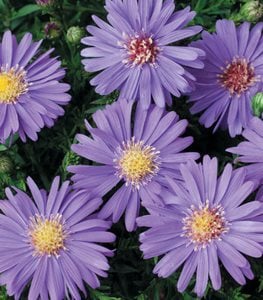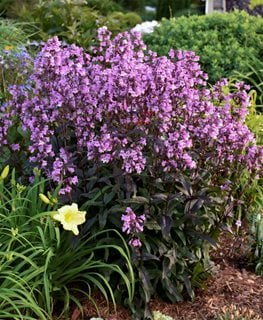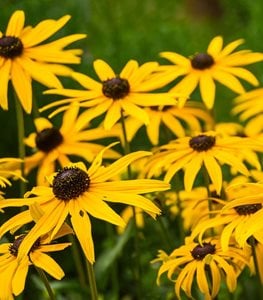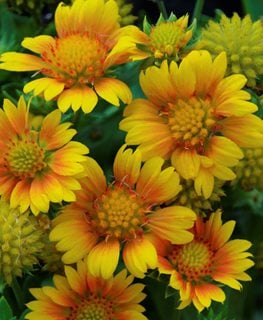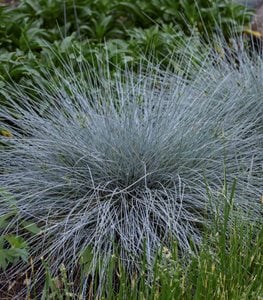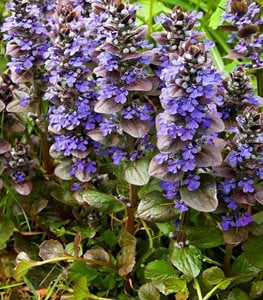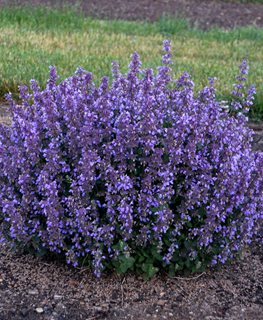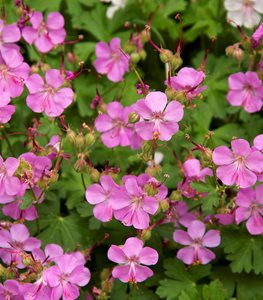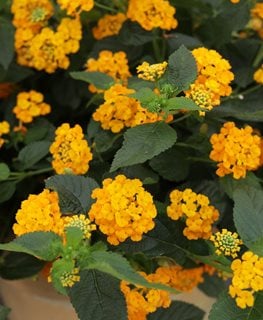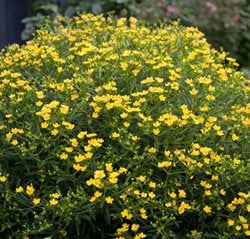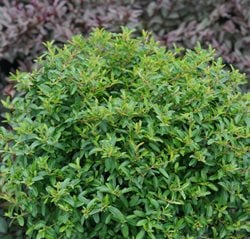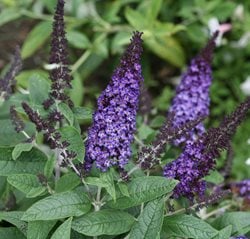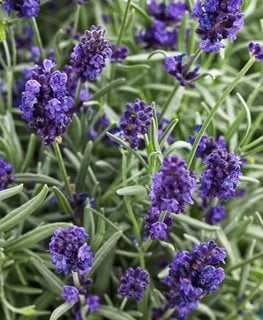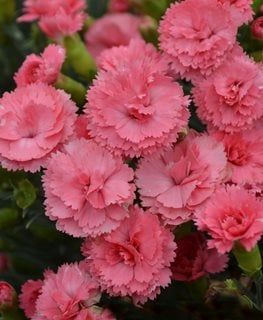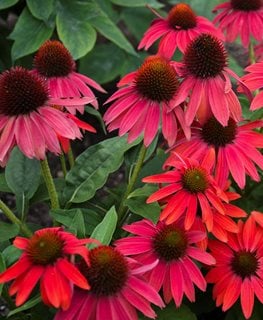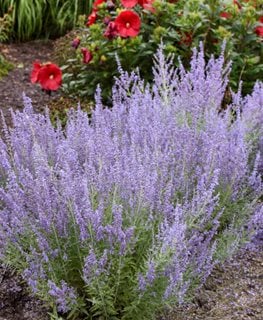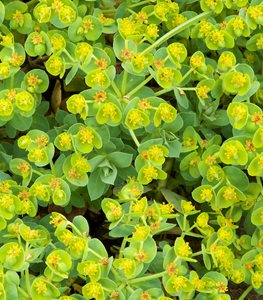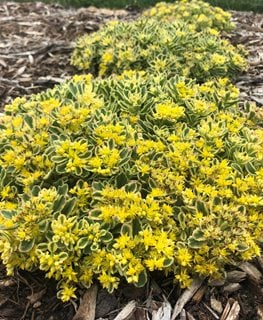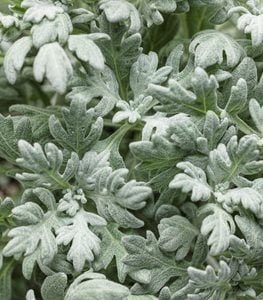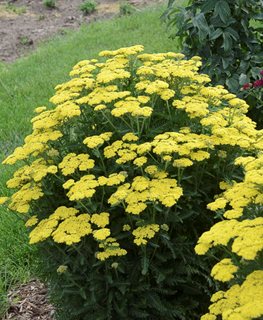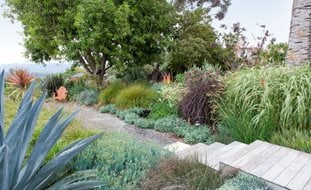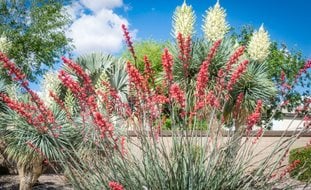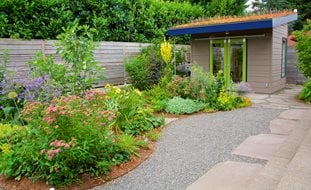20 Drought-Tolerant Plants for a Beautiful Landscape
Reduce your water use by choosing drought-resistant plantsWhether you live in a dry climate or simply want to save on your water bill, using drought-tolerant plants in your landscape is one of the best ways to conserve water. With climate change causing longer and more severe dry spells, some cities have issued water restrictions and are even requiring the use of waterwise plants.
Drought-tolerant landscaping is a viable and attractive alternative to thirsty green lawns. Drought-resistant plants reduce maintenance while using fewer resources. Here’s a list of some tried-and-true varieties to get you started:
On this page: Drought-Tolerant Plants | Drought-Tolerant Landscaping Tips
On this page:
DROUGHT-TOLERANT PLANTS
1. ASTER (Symphyotrichum spp.)
Zones: 3-8
Exposure: Full sun to partial shade
Bloom time: Summer to fall
Height/Spread: Upright spreading habit; 1 to 6 feet tall, 1 to 4 feet wide
Uses: With many species native to North America, asters can be naturalized in a meadow or planted in a mixed border to attract bees, butterflies and other pollinators.
This late-season bloomer produces daisy-like flowers in hues of purple, blue, white or pink. Though asters prefer rich well-draining soil, these tough flowering plants can tolerate a wide range of growing conditions.
Learn more about growing asters.
'Midnight Masquerade' beardtongue. Photo: Proven Winners.
2. BEARDTONGUE (Penstemon spp.)
Zones: 3-9
Exposure: Full sun
Bloom time: Spring to early summer; some will rebloom with deadheading
Height/Spread: Low mounding or upright habit; 6 to 96 inches tall, 8 to 20 inches wide
Uses: Use low growers in a rock garden or curbside planting, while taller varieties can be grown in a cottage-style border or meadow setting.
A diverse group of North American natives, clusters of nectar-rich tubular flowers attract butterflies, bees, and hummingbirds. Flowers occur in a wide range of colors.
Learn more about growing beardtongue.
3. BLACK-EYED SUSAN (Rudbeckia spp.)
Zones: 3-9
Exposure: Full sun
Bloom time: Summer to early fall
Height/Spread: Upright habit; 1 to 4 feet tall, 1 to 2 feet wide
Uses: Add to a waterwise border, cottage-style garden or naturalize in a meadow setting.
This common drought-tolerant perennial is grown for its long blooming daisy-like flowers in rich tones of gold, bronze and brown. The coarse-haired, green foliage is distasteful to deer, making this a good deer-resistant choice.
Learn more about growing black-eyed Susan.
Arizona Apricot blanket flower. Photo: Proven Winners.
4. BLANKET FLOWER (Gaillardia spp.)
Zones: 3-10
Exposure: Full sun
Bloom time: Summer to fall
Height/Spread: Compact mounding habit; 1 to 3 feet tall, 1 to 2 feet wide
Uses: Plant in a curbside strip, along a slope, or in a rock garden.
Colorful flowers occur in bright hues of red, orange, coral, and yellow. This short-lived perennial (usually grown as an annual) is native to western U.S. prairies, dry meadows, and grasslands. Blanket flower thrives in dry sunny conditions and lean soil. Flowers attract bees and other pollinators, while seed heads are a source of food for songbirds and other wildlife.
Learn more about growing blanket flower.
5. BLUE FESCUE (Festuca glauca)
Zones: 4-8
Exposure: Full sun
Bloom time: Late spring to summer
Height/Spread: Clumping habit; 10 to 12 inches tall, 24 to 28 inches wide
Uses: Add color and textural contrast in the landscape or when combined with summer bloomers such as salvias, coneflower, or giant hyssop. The compact size is suitable for containers and small spaces.
Many ornamental grasses are drought-tolerant, requiring little supplemental water once established. Blue fescue provides multi-seasonal interest, with evergreen foliage and elegant wheat-colored seed heads that hold on all summer long.
6. BUGLEWEED (Ajuga reptans)
Zones: 3-10
Exposure: Sun to shade
Bloom time: Mid to late spring
Height/Spread: Low mat-forming habit; 6 to 9 inches tall, 6 to 12 inches wide
Uses: Use around trees and shrubs or for erosion control along a slope.
This tough mat-forming groundcover is a good solution for difficult areas such as dry shade. Plants have attractive pink, blue or purple flowers with green, purple, gold or variegated foliage. Bugleweed plants grow in a wide range of conditions and can become a rampant spreader, but is better controlled by planting in challenging sites and withholding water.
Learn more about growing bugleweed.
'Cat's Pajamas' catmint. Photo: Proven Winners.
7. CATMINT (Nepeta spp.)
Zones: 3-8
Exposure: Full sun to partial shade
Bloom time: Late spring to fall
Height/Spread: Upright spreading habit; 2 to 3 feet tall and wide
Uses: Combine with other drought-tolerant perennials such as ornamental grasses, yarrow, salvia and lamb’s ear.
Exceptionally long-blooming flower spikes occur in cool shades of blue, white or pink. This reliable perennial is low maintenance and tolerant of different soil conditions.
Learn more about growing catmint.
8. CRANESBILL GERANIUM (Geranium spp.)
Zones: 3-9
Exposure: Full sun to partial shade
Bloom time: Spring to fall
Height/Spread: Upright or low spreading habit; 6 to 24 inches tall, 6 to 36 inches wide
Uses: Use these versatile plants for erosion control along a slope, as pathway edging, in curbside strips, rock gardens or mixed borders.
Not to be confused with annual Pelargonium, cranesbill geraniums comprise a large group of long-lived perennials that are hardy in most regions. Ranging from low ground-hugging forms to tall upright varieties, cranesbill geraniums are tolerant of difficult growing conditions such as drought and poor soil.
Learn more about growing cranesbill geraniums.
9. HEN AND CHICKS (Sempervivum tectorum)
Zones: 3-8
Exposure: Full sun
Bloom time: Summer
Height/Spread: Low spreading habit; 1 to 2 feet wide, rosettes grow 2 to 4 inches tall and flower spikes can reack 12 inches tall.
Uses: Provide good drainage and plant in crevices along a rock wall, in a hypertufa or stone container, rockery, or use as pathway edging.
Hen and chicks produce mat-forming clumps of rosettes with fleshy leaves in shades of green, blue-green or red. These succulents are virtually maintenance-free and adapted to dry conditions and lean soil. They also like a bit of afternoon shade to look their best.
Luscious® Golden Gate™ lantana. Photo: Proven Winners.
10. LANTANA (Lantana camara)
Zones: 9-11, grown as an annual in colder regions
Exposure: Full sun
Bloom time: Late spring through frost when grown as an annual, nearly year-round in frost-free regions
Height/Spread: 2 to 6 feet tall and 3 to 10 feet tall when grown as a perennial shrub. When grown as an annual, plants can reach 3 to 4 feet tall and 1 to 3 feet wide in a single season.
Uses: Plant in a container by itself or in combination with other plants. Place in a dry border, as a groundcover along a slope, or in a foundation planting in warmer regions where lantana is a perennial.
One of the best plants for attracting butterflies, the cheerful rainbow-hued flowers occur over an exceptionally long time.
Learn more about growing lantana.
2020 Blue Ribbon Award Winners from Proven Winners
In low-water trials held at the University of California at Davis, these 3 plants were awarded blue ribbons for "maintaining high standards of aesthetic quality over the growing season" when grown with greatly reduced water usage.
Sweet Romance® Lavender. Photo: Proven Winners.
11. LAVENDER (Lavandula spp.)
Zones: 5-9
Exposure: Full sun
Bloom time: Summer
Height/Spread: Mounding habit; 1 to 3 feet tall, 1 to 5 feet wide
Uses: Plant along a slope for erosion control, in a kitchen or herb garden, in a curbside planting or dry mixed border.
Grown for its aromatic flowers and foliage, this native of the Mediterranean region thrives in heat and dry conditions. Provide good drainage to prevent root rot and shear spent flowers for rebloom.
Learn more about growing lavender.
Mojave® Red purslane. Photo: Proven Winners.
12. PURSLANE (Portulaca spp.)
Zones: 10-11, usually grown as an annual
Exposure: Full sun
Bloom time: Summer to frost
Height/Spread: Low, spreading or trailing habit; 3 to 12 inches tall, 6 to 24 inches wide
Uses: Plant in a container or hanging basket, rockery, curbside strip, or allow to cascade over a rock wall.
Small rose-like flowers occur in a range of bright or pastel hues. This South American native is tolerant of heat, drought, poor soil and neglect.
Learn more about growing purslane.
Fruit Punch® 'Classic Coral' pinks. Photo: Proven Winners.
13. PINKS (Dianthus spp.)
Zones: 3-9
Exposure: Full sun to partial shade
Bloom time: Spring to early summer, with some rebloom in the fall
Height/Spread: Upright or low spreading habit; 4 to 36 inches tall, 4 to 24 inches wide
Uses: Use as a groundcover along a slope, in a rock garden, curbside strip or as pathway edging.
Native to alpine and rocky regions, pinks are well adapted to naturally dry conditions. This cottage garden staple is revered for the frilly clove-scented flowers that come in nearly every color.
Learn more about growing pinks.
Lakota™ Fire coneflower. Photo: Proven Winners.
14. PURPLE CONEFLOWER (Echinacea purpurea)
Zones: 3-9
Exposure: Full sun
Bloom time: Mid-summer to fall
Height/Spread: Upright spreading habit; 2 to 5 feet tall, 1-1/2 to 2 feet wide
Uses: The long blooming daisy-like flowers attract butterflies and insect pollinators, while the seed heads are a winter food source for songbirds.
Native to North American prairies, purple coneflower is heat and drought tolerant, easy to grow and virtually maintenance-free.
Learn more about growing coneflower.
'Denim 'n Lace' Russian sage. Photo: Proven Winners.
15. RUSSIAN SAGE (Perovskia atriplicifolia)
Zones: 4-9
Exposure: Full sun
Bloom time: Mid to late summer
Height/Spread: Upright bushy habit; 4 to 5 feet tall, 3 feet wide
Uses: The statuesque flowers makes a statement in a dry border or curbside planting.
Russian sage has dramatic spiky blue flowers that give the garden a pick-me-up late in the growing season. This tough Asian native thrives on hot, dry conditions and neglect. Provide full sun and well-draining soil.
Learn more about growing Russian sage.
Rockin'® Fuchsia salvia. Photo: Proven Winners.
16. SAGE / SALVIA (Salvia spp.)
Zones: 5-9
Exposure: Full sun
Bloom time: Spring to fall
Height/Spread: Upright bushy habit; 1 to 4 feet tall, 1 to 3 feet wide
Uses: Use in a waterwise border, curbside planting, or containers.
This mint relative comprises a large group of plants with aromatic foliage and flowers in a range of forms and colors. These low-maintenance plants are a favorite of bees, butterflies, and hummingbirds.
Learn more about growing salvia plants.
17. SPURGE (Euphorbia spp.)
Zones: 4-11
Exposure: Full sun
Bloom time: Spring to fall, depending on variety
Height/Spread: Upright or spreading habit; 6 to 36 inches tall and wide
Uses: Provide good drainage and plant in a rockery, curbside strip or dry border.
One of the largest groups of plants, euphorbias are grown for their wide range of exotic flower bracts, foliage, and architectural forms. Native to dry regions across the globe, these succulents are heat and drought-tolerant, requiring little care once established. Avoid contact with the white milky sap, which can cause skin irritation or severe eye damage.
Learn more about growing spurge plants.
Rock 'N Low™ 'Boogie Woogie' stonecrop. Photo: Proven Winners.
18. STONECROP / SEDUM (Sedum spp.)
Zones: 3-11
Exposure: Full sun to partial shade
Bloom time: Summer to fall
Height/Spread: Upright or low spreading habit; 2 to 36 inches tall, 12 to 24 inches wide
Uses: Use groundcover types as a living mulch to suppress weeds and help retain moisture. Upright forms can be grown in a waterwise border or curbside planting.
This drought-tolerant succulent comes in a vast array of sizes, forms and colors. These virtually carefree plants prefer lean, well-draining soil and hot, dry conditions.
Learn more about growing stonecrop and sedum plants.
19. WORMWOOD (Artemisia spp.)
Zones: 3-10
Exposure: Full sun
Bloom time: Summer to fall
Height/Spread: Upright or spreading habit; 1 to 5 feeet tall, 1 to 12 feet wide
Uses: Suitable for hot and dry sites, use this herbaceous or shrubby plant as a textural element in a dry border or container.
Grown for its aromatic silvery foliage and essential oils, this quick-growing herb is native to semiarid temperate regions of Eurasia and Africa. Can be invasive in some areas.
'Firefly Sunshine' yarrow. Photo: Proven Winners.
20. YARROW (Achillea spp.)
Zones: 3-11
Exposure: Full sun
Bloom time: Summer
Height/Spread: Upright spreading habit; 1 to 3 feet tall, 2 to 3 feet wide
Uses: This versatile North American native is tolerant of heat, cold, humidity, poor soils and drought. Long-blooming flower clusters in colors of yellow, white, pink, orange or red are attractive to butterflies and insect pollinators.
This versatile North American native is tolerant of heat, cold, humidity, poor soils and drought. Long-blooming flower clusters in colors of yellow, white, pink, orange or red are attractive to butterflies and insect pollinators.
Learn more about growing yarrow plants.
DROUGHT-TOLERANT LANDSCAPING TIPS
- Replace a thirsty turf lawn with drought-tolerant groundcovers that are tough enough to walk on, such as creeping thyme or sedums. (See more: Eco-Friendly Lawn Alternatives)
- Amend soil with compost and other organic matter, which will help to retain moisture. For plants that prefer lean soil, skip the enriching amendments, loosen soil before planting and make sure there is adequate drainage.
- Choose plants with interesting foliage, texture, structure, and contrasting shapes to create multi-seasonal interest that will last long after the flowers fade.
- Mulch plants with a layer of organic matter or small stones to suppress weeds and retain moisture.
- Install an efficient watering system such as drip irrigation. Water early or late in the day to minimize water loss from evaporation.
- Use hardscaping elements such as boulders, patios, and pathways to add structure and define spaces. Augment with decorative touches such as a bench, birdbath, or fountain that act as focal points. Construct pathways with permeable material such as pea gravel to slow water runoff.
See more on how to create a drought-tolerant landscape.
NOTES ON DROUGHT-TOLERANT PLANTS FROM KEN DRUSE:
Drought-tolerant plants can be identified just by looking at them or feeling or smelling their bruised foliage. Many fragrant herbs, for example, are drought-tolerant. Plants that are native to sunny parts of the world, such as the Mediterranean, are obvious choices. Their leaves are often small, sometimes needlelike-those of lavender, for instance. Their leaves may be arranged in whorls on tall, slender stems so that each one gathers light without shading the next one down on the stem. The leaves may have some moisture-conserving device, such as hairs, a waxy coating, or powder. Some leaves are so reflective they look almost metallic. Don’t forget, many spring bulbs actually prefer dry sites in summer. These plants become dormant in summer and store water in their modified stem: the bulb.


